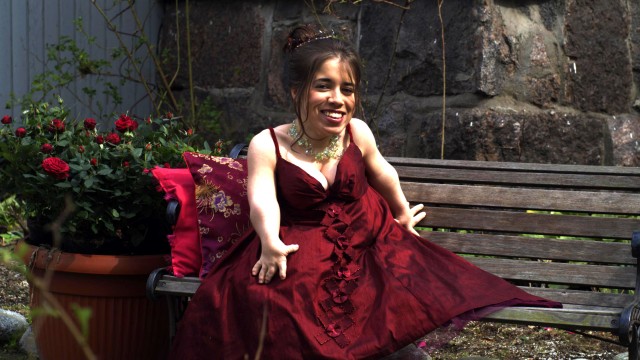
Pretty Cripple – Hellyydestä hajoavat luut
Exhibition in 2007.
Starting from the TARU -project gallery at the old buss station in Helsinki. Visiting later Tallinn and Tartu, Estonia.
The Pretty Cripple -exhibition was about the use and the structures of power that face people with disabilities. The title of the exhibition was a reminiscent of the 1990 movie Pretty Woman, which – like My Fair Lady – aspires to be a modern version of the play about a sculptor Pygmalion by Bernard Shaw.

Edward Lewis: What’s your name?
Vivian: What do you want it to be?
In the Pretty Woman movie, the woman is not made of stone or marble. The storyline is about an enounter of two people and how a well-off businessman recognises the talent and uniqueness of the prostitute, who has grown up in different surroundings. Besides a love affair, the encounter leads to a relationship of ”training” that slowly brings new meaning to both their lives. The basic problem of the Pretty Movie film is the use of power and how a female is defined in relation to the male norm. The woman is understood as a material-to-be-moulded, and who gets soul and individuality by a man. A woman becomes acceptable to a man after he has moulded her himself. The woman’s role is only through a man or as a prize for the man.

There is something similar in the medical view of disability. In medicine, disablility is defined by looking for outer, inner or functional errors such as missing senses, bodyparts or psychological skills. Thereupon follows an attempt to repair the observed failings with technical aides, therapy, treatment, or rehabilitation. Unfortunately, the motive is not always primarily to increase the quality of life but to mould a person to fit into standards and norms of society.
In the medical definition of disability, power and responsibility for human life is transferred to experts. The opponents of this model criticise the premise of there being a failure, that needs fixing. The patologisation of individuals is also used to justify the inequality faced by disabled people in society, because it is considered a law of Nature.
Vivian: You’re late.
Edward: You’re stunning.
Vivian: You’re forgiven.

In the Pretty Cripple exhibition, power is being used by the able-bodied male and society. In this ”relationship” the person with disability is the one that adapts, is flexible, gives up. Sits at home waiting for a home service instead of a personal assistant, stops going to hobbies beacuse of failures of the transport system and finally agrees to apply to any accessible school despite hating it, because other training possibilities are not on offer.
In Pretty Woman -movie, there is scene after scene where the millionaire offers the prostitute luxurious experiences. New experiences and the pleasure derived from success strengthen her self esteem and change her view on herself. She tries out a whole variety of things from champagne and strawberries to an opera night via private jet. She gets to drive a Lotus Esprit, and move into a 5-star hotel for a week, eat snails, shop-till-she-drops on Rhodeo Drive and watch horse polo.

In the Pretty Cripple exhibition I question the attitude that the search for a luxurious life, fabulous looks and having fun are not important. Especially, when talking about women with disabilities. It’s often assumed that PWD’s need more spiritual, ”noble” experiences than the Hollywood-type ones portrayed by the Pretty Woman movie. But why shouldn’t the dreams and starry moments of women with disabilities not be connected to millionaires and jacuzzis? We have the right to unrealistic escapism too.
In the exhibition I put a women with disability into the place of Julia Roberts. I showed how these women spend and splurge it all, relaxed in a bubble bath and demanded to be carried into the opera box. I attempted to capture the same pleasure and joy as there is in the movie, but in a way that practical difficulties are not made to disappear.